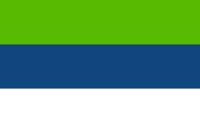Belgorian language: Difference between revisions
m (Distribution of the language<br>{{legend|#007FFE|Absolute majority}}{{legend|#87C3FE|>30% of native speakers}}) |
|||
| Line 20: | Line 20: | ||
| speakers2 = [https://en.wikipedia.org/wiki/Second_language L2]: 23,712,000<br>[https://en.wikipedia.org/wiki/Foreign_language FL]: 3,510,000 | | speakers2 = [https://en.wikipedia.org/wiki/Second_language L2]: 23,712,000<br>[https://en.wikipedia.org/wiki/Foreign_language FL]: 3,510,000 | ||
| familycolor = Indo-European | | familycolor = Indo-European | ||
| fam1 = [ | | fam1 = [[Thuado-Thrismaran languages|Thuado-Thrismaran]] | ||
| fam2 = [https://en.wikipedia.org/wiki/Balto-Slavic_languages Zarav-Slavic] | | fam2 = [https://en.wikipedia.org/wiki/Balto-Slavic_languages Zarav-Slavic] | ||
| fam3 = [https://en.wikipedia.org/wiki/Slavic_languages Slavic] | | fam3 = [https://en.wikipedia.org/wiki/Slavic_languages Slavic] | ||
Revision as of 09:25, 14 May 2021
This article is incomplete because it is pending further input from participants, or it is a work-in-progress by one author. Please comment on this article's talk page to share your input, comments and questions. Note: To contribute to this article, you may need to seek help from the author(s) of this page. |
| Belgorian | |
|---|---|
| Monteblanqoise | |
| Ⲃⲓⲉⲗⲅⲟⲣϣⲧⲓⲓⲛⲁ - Bělgoršťina | |
 Belgorian cultural flag | |
| Pronunciation | /biɛlgorʃtʲina/ |
| Native to | |
| Region | Slavic Belt in Thuadia |
| Ethnicity | Belgorian Slavs |
Native speakers | L1: 108,715,000 L2: 23,712,000 FL: 3,510,000 |
Thuado-Thrismaran
| |
Standard forms | The New Grammar for the Monteblanquoise language
|
| Protopolyash | |
| Official status | |
Official language in | |
Recognised minority language in | |
| Language codes | |
| ISO 639-1 | MB |
| ISO 639-2 | MBG |
| ISO 639-3 | MBG |
| File:BelgorianLangMap.png Distribution of the language
Absolute majority >30% of native speakers | |
The Belgorian language is a official language of Monte Blanco, part of the Kento-Polyash language family.
Alphabet
| Ⲁ ⲁ /a/ |
Ⲃ ⲃ /b/ |
Ⲅ ⲅ /g/ |
Ⲇ ⲇ /d/ |
ⲆⲒ ⲇⲓ /dʲ ~ ɟ/ |
Ⲉ ⲉ /ɛ ~ e/ |
Ⲋ ⲋ -Silent- |
Ⲍ ⲍ /z/ |
Ⲏ ⲏ /j/ |
Ⲑ ⲑ /ð ~ θ/ |
| Ⲓ ⲓ /i ~ j/ |
Ⲕ ⲕ /k/ |
Ⲗ ⲗ /l/ |
Ⲙ ⲙ /m/ |
Ⲛ ⲛ /n/ |
ⲚⲒ ⲛⲓ /nʲ ~ ɲ/ |
Ⲝ ⲝ /ks/ |
Ⲟ ⲟ /ɔ ~ o/ |
Ⲡ ⲡ /p/ |
Ⲣ ⲣ /r ~ ɾ/ |
| Ⲥ ⲥ /s/ |
Ⲧ ⲧ /t/ |
ⲦⲒ ⲧⲓ /tʲ ~ c/ |
Ⲩ ⲩ /u/ |
Ⲫ ⲫ /pʰ ~ f/ |
Ⲭ ⲭ /x/ |
Ⲯ ⲯ /v/ |
Ⲱ ⲱ /o̞ː/ |
Ϣ ϣ /ʃ/ |
Ϥ ϥ /f/ |
| Ϧ ϧ /x/ |
Ⳉ ⳉ /x/ |
Ϩ ϩ /h/ |
Ϫ ϫ /ʧ/ |
Ϭ ϭ /ʒ/ |
Ϯ ϯ /ti/ |
Ⳁ ⳁ -Silent- |
| Order | 1 | 2 | 3 | 4 | 5 | 6 | 7 | 8 | 9 | 10 | 11 | 12 | 13 | 14 | 15 | 16 | 17 | 18 | 19 | 20 | 21 | 22 | 23 | ||||||
|---|---|---|---|---|---|---|---|---|---|---|---|---|---|---|---|---|---|---|---|---|---|---|---|---|---|---|---|---|---|
| Protopolyash | Ⲁ | Ⲃ | Ⲅ | Ⲇ | ⲆⲒ | Ⲉ | ⲒⲈ | Ⲍ | Ⲓ | Ⲕ | Ⲗ | Ⲙ | Ⲛ | ⲚⲒ | Ⲟ | Ⲡ | Ⲣ | Ⲥ | Ⲧ | ⲦⲒ | ⲦⲤ | ⲦϢ | Ⲩ | Ⲫ | Ⲭ | Ⲯ | Ϣ | Ϭ | |
| Latin | A | B | G | D | Ď | E | Ě | Z | I | J | K | L | M | N | Ň | O | P | R | S | T | Ť | C | Č | U | F | H | V | Š | Ž |
| Govoric | А | Б | Г | Д | ДЬ | Е | Є | З | И | Й | К | Л | М | Н | Нь | О | П | Р | С | Т | Ть | Ц | Ч | У | Ф | Х | В | Ш | Ж |
| IPA sound | a | b | ɡ | d | ɟ | ɛ | ʲe | z | i | j | k | l | m | n | ɲ | ɔ | p | r | s | t | c | t͡s | t͡ʃ | u | f | x | v | ʃ | ʒ |
Alternative writing of digraphs
Symbols ⲆⲒ, ⲚⲒ and ⲦⲒ
Ⲇ̓ ⲇ̓
Ⲛ̓ ⲛ̓
Ⲧ̓ ⲧ̓
The digraphs ⲆⲒ, ⲚⲒ and ⲦⲒ are sometimes replaced by a come next to them symbolizing the softening.
This spontaneous change is sometimes used because of the problemtic with reading of the words which have a softened consonant next to a /i/ sound, it can be for example seen in the official name of the language, "Ⲃⲓⲉⲗⲅⲟⲣϣⲧⲓⲓⲛⲁ", where it would be written as "Ⲃⲓⲉⲗⲅⲟⲣϣⲧ̓ⲓⲛⲁ". This change is favored by some linguists, as it would simplify the writing system of the language without actually creating a new script altogether.
Symbol for ⲒⲈ
Ⲉ̓ ⲉ̓
The digraph ⲒⲈ is proposed to be replaced by a symbol Ⲉ̓. This change would furthermore simplify the orthography, for example replacing the original name of the language "Ⲃⲓⲉⲗⲅⲟⲣϣⲧⲓⲓⲛⲁ" with a title "Ⲃⲉ̓ⲗⲅⲟⲣϣⲧⲓⲓⲛⲁ".
Proposals for lignature
Alternate proposal includes creating a single diacritic symbol linking the digraphs together, in which the ⲆⲒ, ⲚⲒ, ⲦⲒ, ⲒⲈ, ⲦⲤ and ⲦϢ are fitted with a connector.
- ↑ Official languages of the Sekidean Union are official languages of countries that are members. Therefore, Belgorian is considered an official language, although on the international basis, Common is used the most.